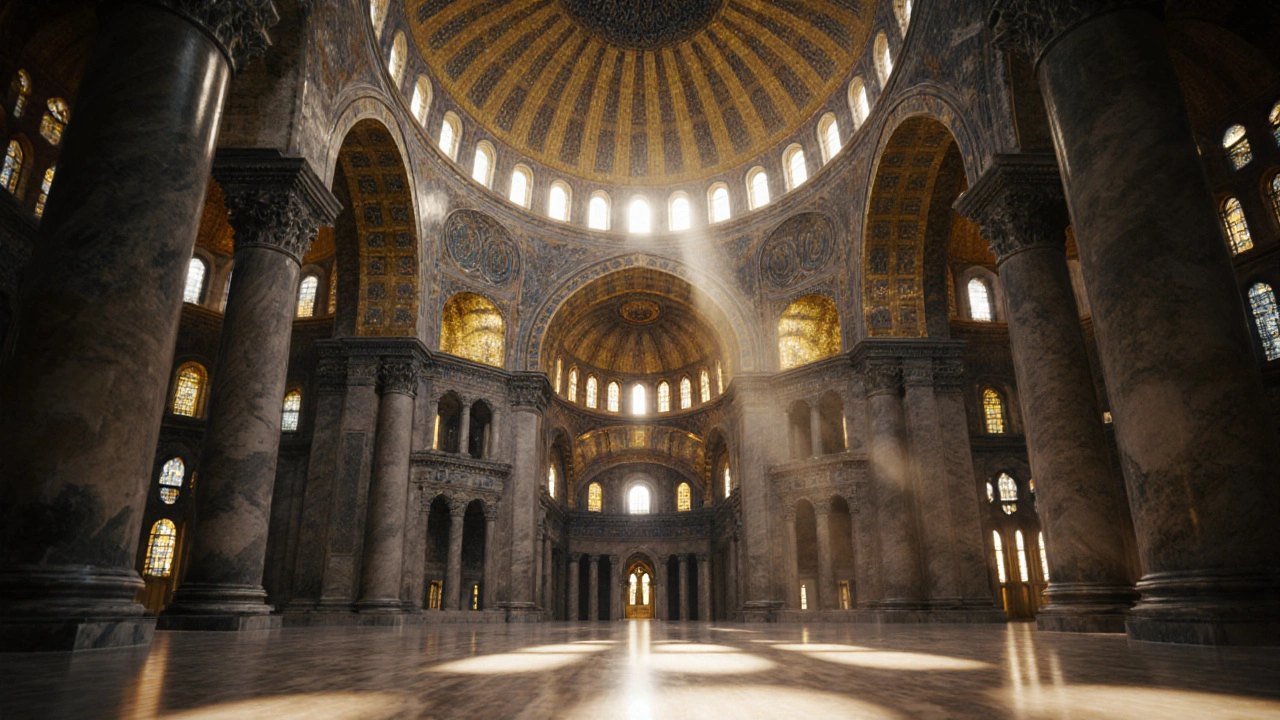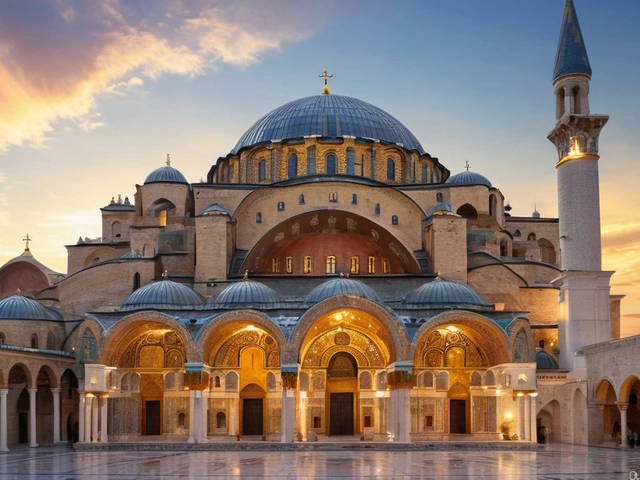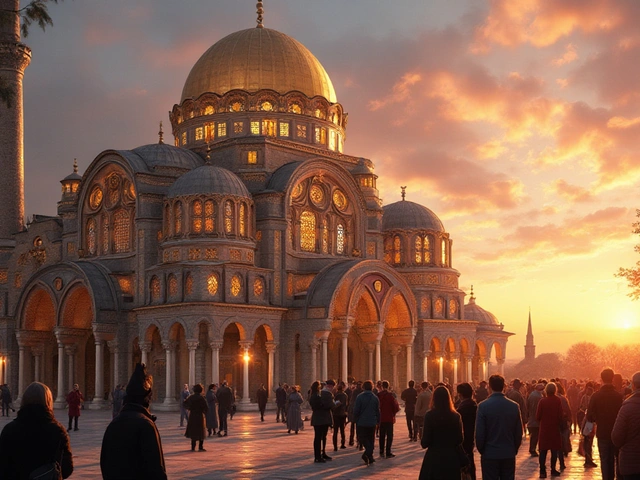Byzantine Light Experience Calculator
Byzantine architecture transformed light from a physical element into a spiritual experience. This calculator simulates how architectural features influenced the sacred atmosphere in historic churches like Hagia Sophia. Enter values below to see how light would interact with key architectural elements.
Enter values to see how light transforms the sacred space.
Walk into Hagia Sophia in Istanbul, and something immediate hits you-not the size, not the marble, not even the golden mosaics. It’s the light. It pours through dozens of windows hidden behind the massive dome, spilling across the floor like liquid gold. You don’t just see it-you feel it. That’s not accident. That’s theology made stone.
Light as Divine Presence
Byzantine architecture wasn’t built to impress. It was built to transport. In a time when most people lived in dim, cramped homes, churches were designed as portals to heaven. The central dome, often resting on pendentives, wasn’t just an engineering feat-it was a metaphor. It represented the vault of heaven, suspended above the earth, holding the divine. Light didn’t just illuminate; it became a physical manifestation of God’s presence.At the Church of the Holy Apostles in Constantinople, the dome was gilded with gold tesserae that reflected candlelight and sunlight alike. Pilgrims reported feeling as if they were standing inside a heavenly sphere. The architects didn’t use stained glass like Gothic cathedrals later would. Instead, they used light itself-filtered, diffused, and multiplied through hundreds of small windows-to create an effect that felt supernatural. This wasn’t decoration. It was worship.
The Dome: Heaven on Earth
The dome is the heartbeat of Byzantine architecture. Unlike Roman domes, which sat on thick walls, Byzantine domes floated. They were supported by four massive piers and curved pendentives that transferred weight downward in a way that made the dome appear to hover. This illusion was intentional. It mirrored the theological idea that heaven was not bound by earthly physics.The Hagia Sophia’s dome, spanning 31 meters, was the largest in the world for nearly a thousand years. But its true power wasn’t in its size-it was in its emptiness. The dome didn’t hold a painting of Christ Pantocrator to dominate the space. It held light. And in that light, worshippers saw God not as a ruler on a throne, but as an all-encompassing presence. This was a radical shift from earlier Christian art, which often showed Christ as a stern judge. Byzantine theology emphasized mystery, transcendence, and awe.
Mosaics: Windows to the Divine
The walls of Byzantine churches weren’t painted-they were covered in mosaics. Tiny pieces of glass, stone, and gold were set into wet plaster to create images of saints, angels, and Christ. But these weren’t portraits. They were icons-windows into the sacred. Unlike Western art, which later focused on realism and emotion, Byzantine mosaics were stylized, flat, and timeless. Faces were serene. Eyes looked straight ahead, not at you, but through you.Every mosaic had a purpose. The Virgin Mary, often shown as Theotokos (God-bearer), was placed above the apse, facing the altar. Christ Pantocrator, ruler of all, dominated the dome. Angels flanked the nave. The faithful moved through the space like pilgrims in a cosmic map, each image guiding their prayers. These weren’t decorations for the rich. They were tools for prayer, designed to help ordinary people connect with the divine.
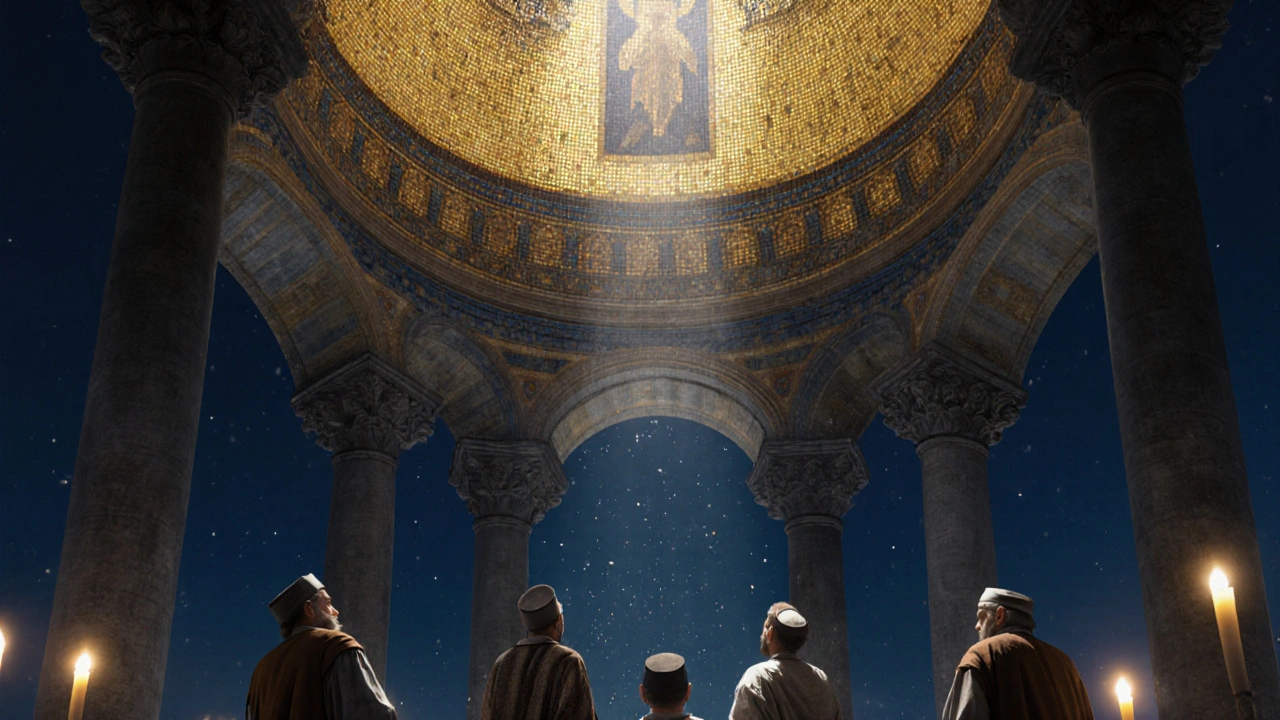
Layout: The Journey of the Soul
The plan of a Byzantine church wasn’t random. Most followed the Greek cross layout-four arms of equal length, centered under the dome. This shape mirrored the cross, but also the cosmos. The nave was the earthly realm. The sanctuary, behind the iconostasis, was heaven. The transition wasn’t marked by a door-it was marked by silence, by light, by the shift in atmosphere.When you entered, you didn’t walk straight to the altar. You moved slowly, through narthex (entrance hall), into the nave, then toward the sanctuary. Each space had a different texture, a different level of light. The narthex was darker, simpler. The nave was filled with mosaics and columns. The sanctuary, lit from above, glowed. This wasn’t just architecture-it was a spiritual progression. You weren’t just attending a service. You were ascending.
Materials: Earthly, But Not of This World
Byzantine builders used the best materials available: marble from Proconnesos, porphyry from Egypt, gold leaf from Nubia. But they didn’t use them to show off wealth. They used them to reflect light. Marble floors weren’t polished for cleanliness-they were polished to multiply the glow from candles and sunlight. Gold wasn’t a status symbol-it was a way to make the divine visible.Even the bricks were chosen carefully. They were lightweight, allowing for taller, thinner walls and larger windows. The mortar was mixed with crushed brick, making it more flexible and resistant to earthquakes. Every material decision served the same goal: to create a space where heaven felt close enough to touch.
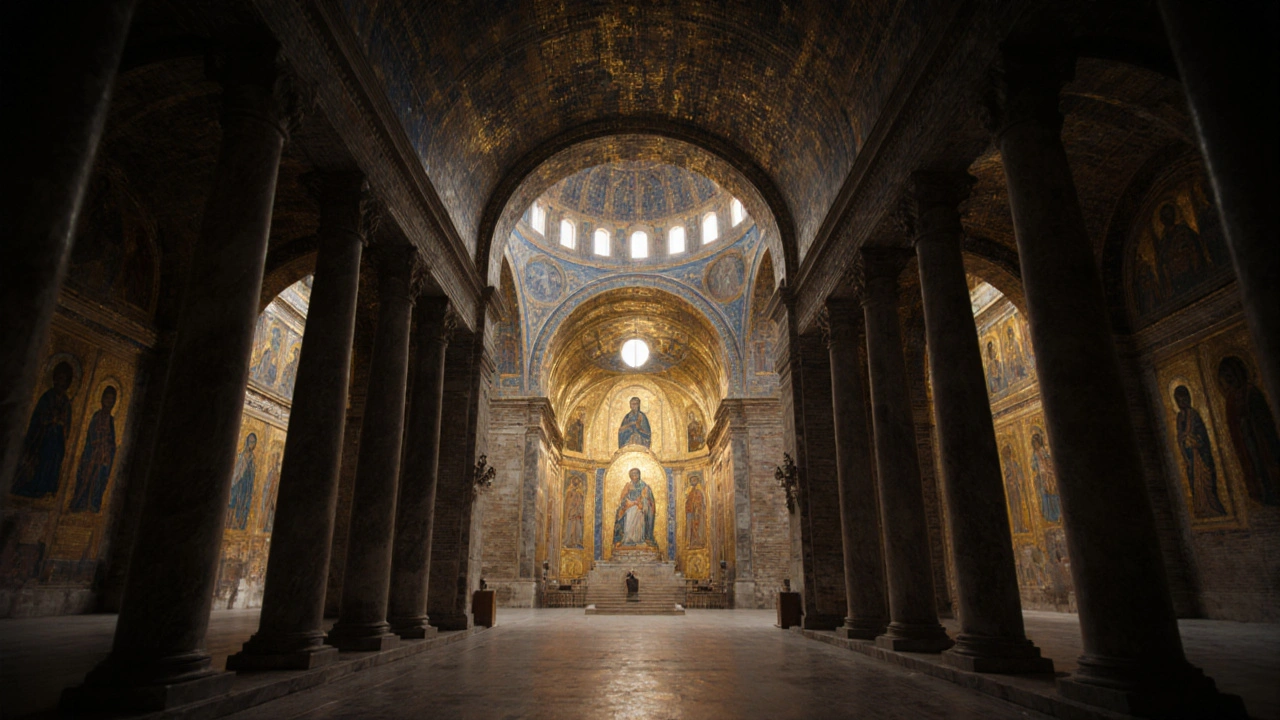
Legacy: Beyond Churches
The influence of Byzantine architecture didn’t die when Constantinople fell. It traveled. In Russia, the onion domes of Saint Basil’s Cathedral echo the celestial dome of Hagia Sophia. In Venice, St. Mark’s Basilica copies its mosaics and central plan. Even in modern churches, you can see the same principles: the focus on light, the central dome, the quiet reverence of the space.Today, people visit these buildings as tourists. They snap photos of the mosaics, marvel at the dome, and walk away without understanding why they felt something deeper than awe. But that feeling? That’s the point. Byzantine architects didn’t just build churches. They built experiences of the sacred. They knew that to make people feel God’s presence, you had to change the air they breathed, the light they saw, the ground they walked on.
Why It Still Matters
In a world obsessed with speed, noise, and spectacle, Byzantine architecture offers something rare: stillness. It doesn’t shout. It doesn’t overwhelm. It invites. You don’t need to be religious to feel its power. You just need to be still long enough to notice the light.Modern architecture often treats space as a container for function. Byzantine architecture treated space as a vessel for meaning. It reminds us that buildings can do more than shelter-they can shape how we understand the divine, the eternal, and the unseen.
What makes Byzantine architecture different from Roman architecture?
Roman architecture focused on grandeur through scale and engineering-aqueducts, amphitheaters, and massive vaults built for public use. Byzantine architecture shifted focus from public spectacle to spiritual experience. Instead of heavy, grounded structures, Byzantines used lightweight materials and pendentives to create floating domes. They emphasized light, symbolism, and sacred geometry over practicality. While Romans built to impress, Byzantines built to elevate the soul.
Why are gold mosaics so common in Byzantine churches?
Gold wasn’t used for decoration-it was used to represent divine light. In the absence of stained glass, gold tesserae reflected candlelight and sunlight, creating a shimmering effect that made figures appear to glow. This wasn’t about wealth; it was about theology. Gold symbolized the uncreated light of God, the same light described by mystics as the presence of the divine. The mosaics weren’t portraits-they were windows into the sacred realm.
How did Byzantine architecture influence Russian churches?
When Russia adopted Orthodox Christianity in 988, it looked to Constantinople as its spiritual model. Russian builders copied the central dome, the cross-shaped floor plan, and the use of mosaics. Over time, they adapted the dome into the iconic onion shape, which better shed snow and became a symbol of the flame of faith. Churches like Saint Basil’s in Moscow are direct descendants of Hagia Sophia-not in exact design, but in spiritual intent: to make heaven feel near.
Did Byzantine architecture only serve religious purposes?
Primarily, yes. Almost all surviving Byzantine buildings are churches, monasteries, or imperial chapels. The state and church were deeply intertwined, so architecture served both political and spiritual roles. Palaces like the Great Palace of Constantinople had private chapels designed with the same principles-light, mosaics, and sacred geometry. But there were no secular buildings built with the same spiritual intent. The focus was always on the divine, not the earthly.
Can you feel the spiritual effect of Byzantine architecture even today?
Absolutely. Many visitors to Hagia Sophia, even those who aren’t religious, describe a sense of calm, awe, or even tears. The silence, the light, the scale-it all works together to slow down time. Modern architects still study it because it proves that space can influence emotion without words or symbols. You don’t need to believe in God to feel something sacred when you stand under that dome.

